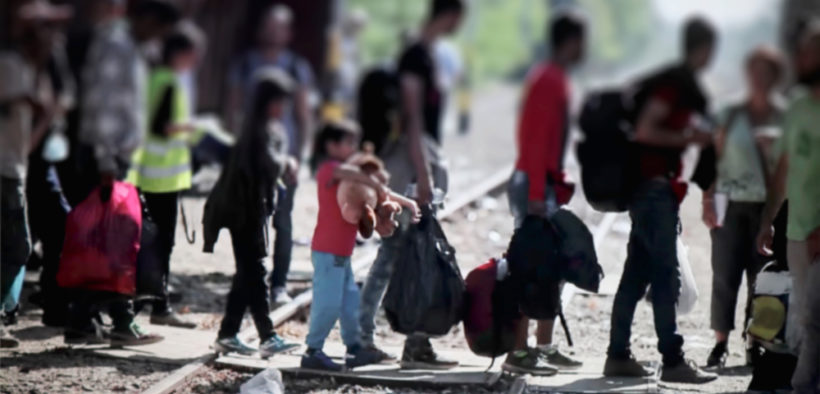Lifting Australia’s humanitarian intake will increase the Australian economy by $37.7 billion in today’s dollars over the next 50 years, according to an Oxfam report that backs the push to make it easier for refugees and humanitarian migrants in Australia to reunite with their families.
Oxfam’s report, Stronger Together: The impact of family separation on refugees and humanitarian migrants in Australia, includes comprehensive modelling by Deloitte Access Economics, which shows that lifting the humanitarian intake from 18,750 now to 44,000 by 2022/23 will increase overall GDP, demand in Australia for goods and services, and the number of jobs.
Oxfam Australia Chief Executive Lyn Morgain said this report showed that not only could Australia do the right thing by people seeking refuge, but in the long run it would also benefit the Australian economy.
“The primary purpose of Australia’s Refugee and Humanitarian intake is to provide refuge and support to people who have been forced to flee their home country in order to escape war, persecution, or a natural disaster,” Morgain said.
“What this report and the modelling from Deloitte Access Economics shows is that accepting more refugees will boost the Australian economy as these new Australians settle in and become productive members of our society.”
New Oxfam-commissioned research conducted by Monash University concludes that keeping families together is the key to successful resettlement of refugees and humanitarian migrants in Australia, in terms of enhancing social inclusion, integration and cohesion.
The Monash research further found that refugees and humanitarian migrants who had been reunited with their families had a lower probability of mental illness and post-traumatic stress disorder (PTSD), and were more likely to be engaged in study or job training.
“I’ve seen just how stressful and hard it is for refugees settled in Australia to try and build a new life here, when family members they love dearly – parents, sisters and brothers, aunts, uncles or cousins – are missing, living in danger in the war-torn countries they’ve fled or struggling to survive in a refugee camp on the other side of the world,” Morgain said.
Originally from Ethiopia, Lelisse was separated from her husband Dabessa for nine years and her children for five years, after both parents were wrongfully imprisoned at separate times, before they were reunited in Australia.
When asked about the separation Dabessa said: “When we arrived [in Australia] … I knew my wife was not here. I knew we were incomplete. If I continue strong, one day we will come together, one day this family will be back. One day the joy [will] come back. One day we will start our new life.”
Morgain said Australia had a complex refugee and humanitarian system that made many families wait for years to be reunited, and some never saw their mothers, fathers, siblings or children again.
“No family should be forced to live apart. Unified families, who love and care for one another, are the glue that binds our communities together,” Morgain said.
Oxfam is calling on the Australian Government to increase the refugee intake to 44,000 by 2022/23 and to create within it a visa stream of 10,000 places annually that is specifically designed to make it easier for humanitarian migrants to be reunited with their family.
Pearl Dy is a community manager and journalist. She is passionate about business and development particularly involving not-for-profits, charity and social entrepreneurship.
























































































































































